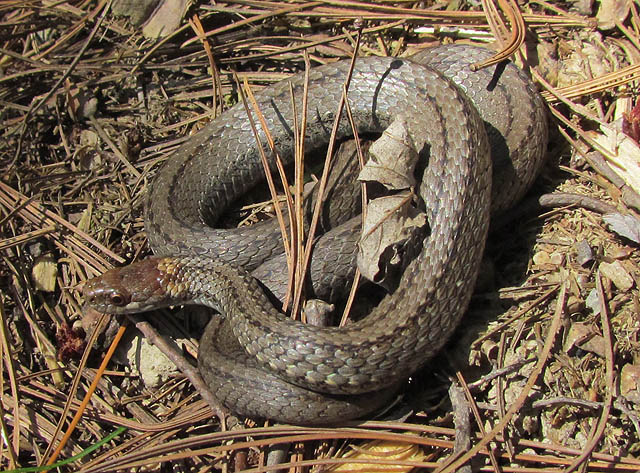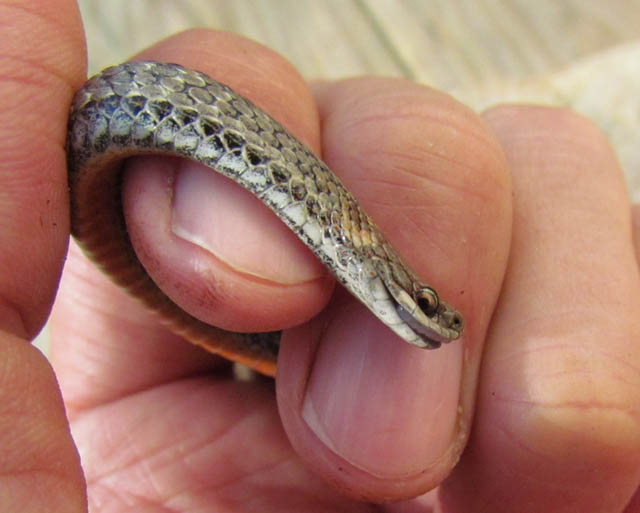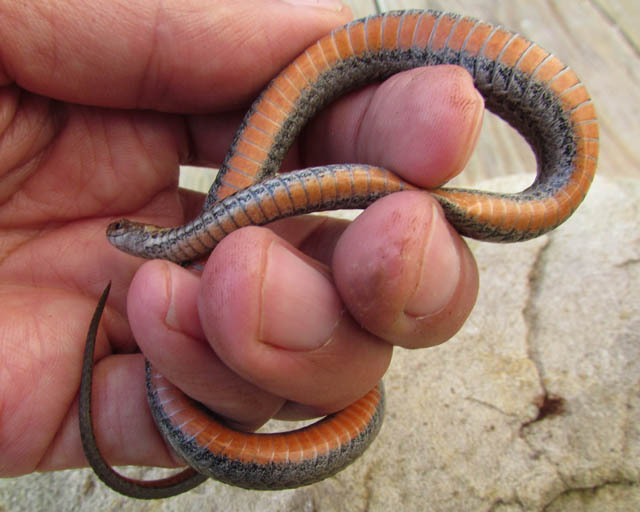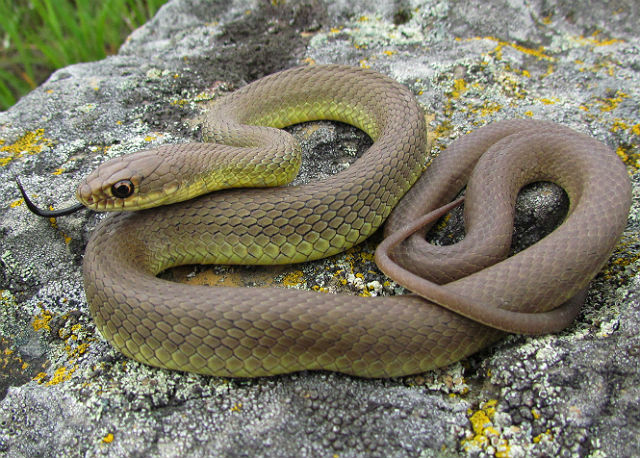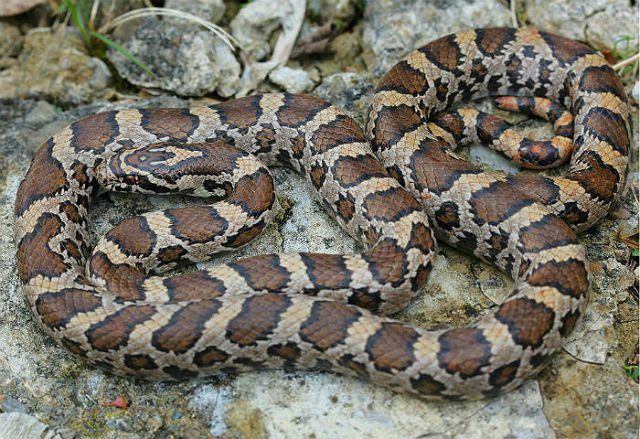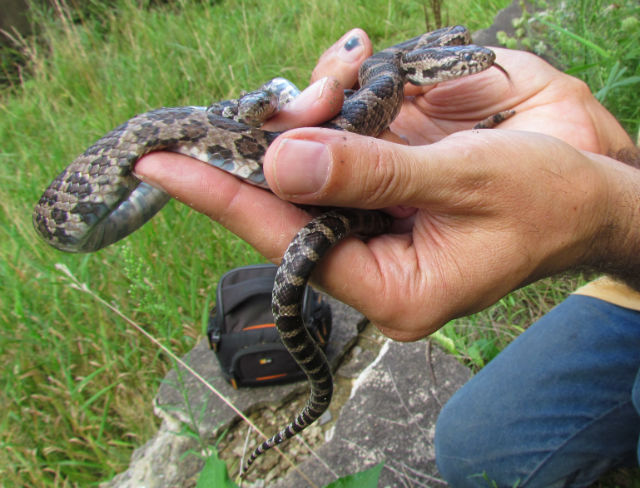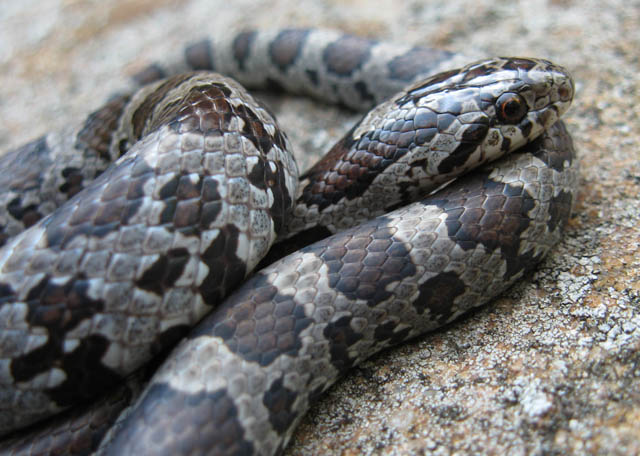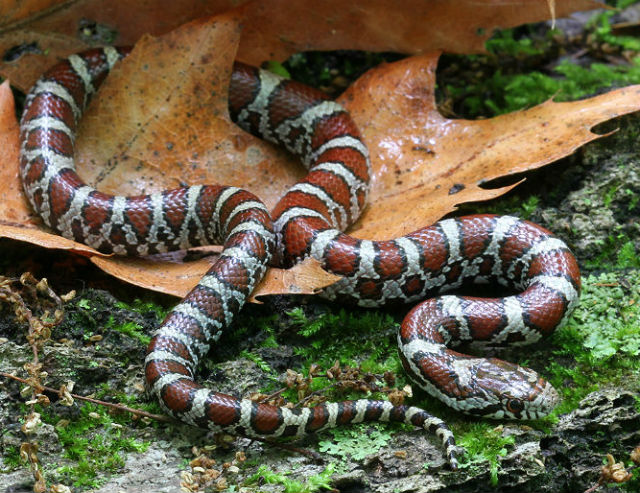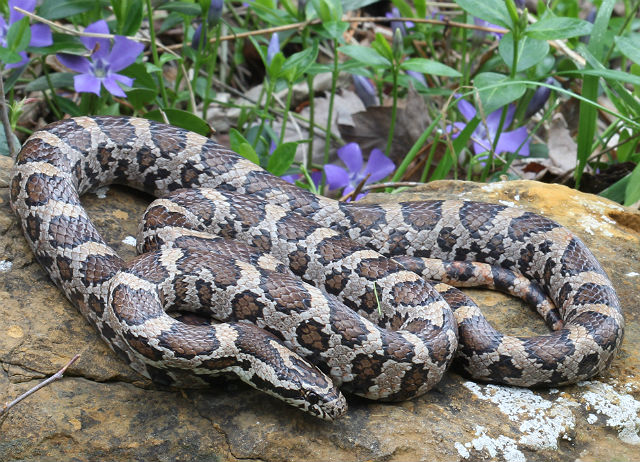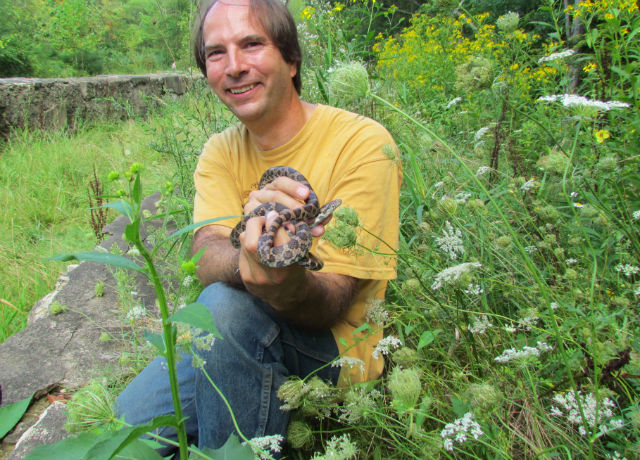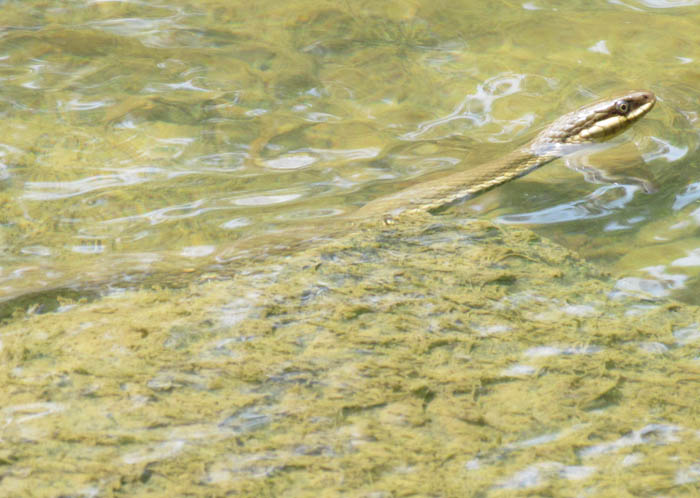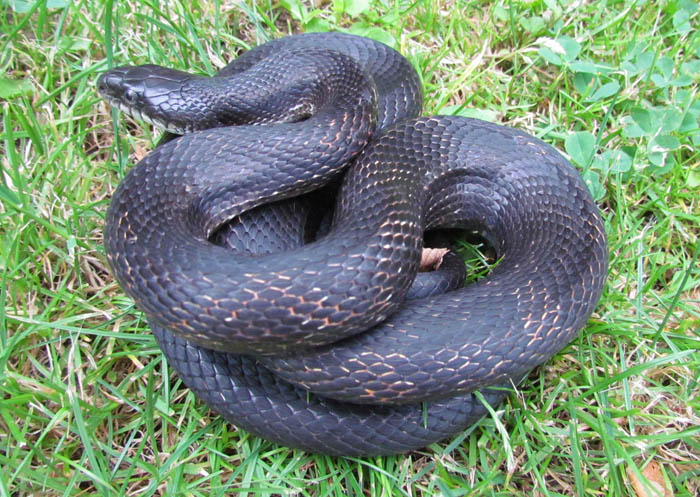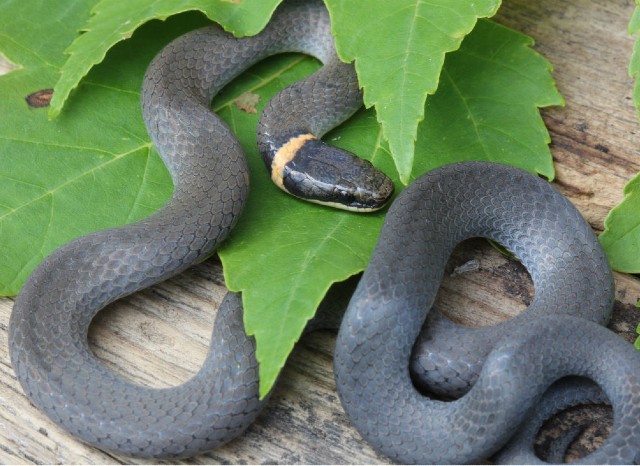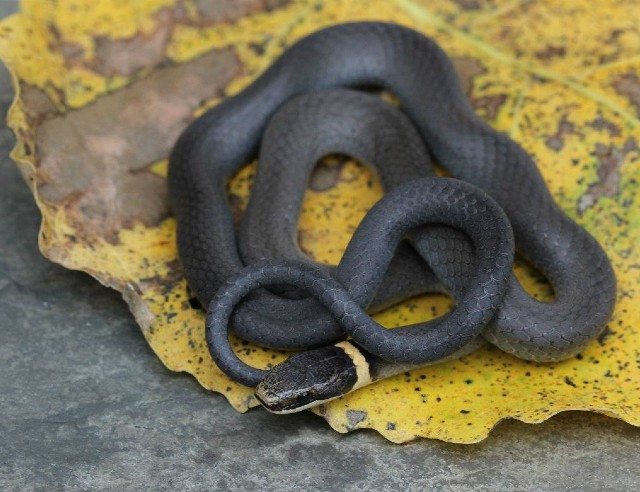While exploring this clearing in the woods, I came across a snake that I have not seen in quite some time and have never seen in Cuyahoga County.
This is Ohio’s smallest snake, growing to only 8-10 inches long. Northern Red-bellied Snakes feed mostly on slugs and snails. This species has jaw and tooth adaptations that assist in the extraction of snails from their shells.
A uniformly scarlet or red-orange belly and three well-defined light blotches immediately behind the head are this reptile’s most distinctive characteristics. It is very secretive and spends most of its life hidden. Females give birth to 7 or 8 tiny, live offspring in late Summer.
The Northern Red-bellied Snake has the curious habit of curling its upper lip and exposing its teeth when it feels threatened, though it is harmless and makes no attempt to bite.
Another defense is exposing its bright red belly, which may be enough to startle a predator momentarily and allow the snake escape.
Having and unexpected encounter with this remarkable reptile made for an excellent outing.


